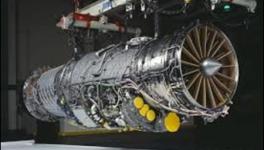Sitharaman on HAL & Rafale: Misdirection and Alternative Facts
Image for representational use only; Image Courtesy : NDTV
Raksha Mantri Nirmala Sitharaman’s long and tortured statements in the Lok Sabha on January 4 and 7, 2019, during the debate on the Rafale scandal followed the pattern of the government’s and her own responses to the storm of criticism and charges against the Narendra Modi Government. On this occasion, the RM was compelled to make a detailed statement on January 7 to supposedly clarify her own remarks in Parliament made on January 4, regarding payments made to Hindustan Aeronautics Limited (HAL).
The Minister had intended to show that her government has been fully supporting the premier defence public sector undertaking (DPSU) and not, as charged, downgrading it given its clear policy stance preferring private companies in defence manufacturing as well as its actions favouring specific companies run by cronies. Unfortunately for her, the “clarification” has only muddied the waters further, repeating the pattern of earlier attempts at clearing the air, ending up only making things worse.
To refresh memories, the HAL issue came to the fore because the Modi Government’s sudden and unilateral decision to change the under-final-negotiation tender for 126 Rafales from Dassault of France-- with 108 aircraft to be made by HAL in India through technology transfer -- to the new deal for outright purchase of 36 Rafale fighters. This purchase was to be made with Anil Ambani’s Reliance Defence as offset partner which had left HAL high and dry. That the decision was taken by the Prime Minister without prior approval from any decision-making committee concerned or consultation with main stakeholders, including the Indian Air Force (IAF), and obviously benefited an inexperienced and highly indebted crony, rubbed in the injustice. When RM herself, in one of her clumsy attempts to justify the decision, proclaimed that HAL did not have the capability to produce a 4+ generation fighter, she had only added fuel to the fire.
On the eve of the Parliamentary debate came the news that HAL, which was normally cash rich and showed healthy turnover and profits, had been forced to raise a bank loan to meet staff wages. In the midst of all this, Sitharaman stated in Parliament that her government had placed, or had in the pipeline, orders worth Rs. 1 lakh crore with HAL, proving its full support for the DPSU. HAL spokespersons issued denials, the Opposition launched a Twitter war, and many commentators wrote fact-checking articles which showed huge gaps between the RM’s statement and the ground reality. Unfortunately for the RM, her detailed clarification on January 7 did nothing to dispel suspicion that she was once again trying to mislead the public through half-truths and misdirection.
READ MORE: Defence Analysts Call Out Sitharaman's "Clarification"
Misdirection and Half-Truths
A magician’s stock and trade, apart from sleight of hand, is termed misdirection, i.e. to make exaggerated actions to which the attention of the audience is naturally drawn, while the intended “magical” action is performed somewhere else. The action openly shown by the magician also appears plausible, making the “magical” act appear all the more incredible!
It is now becoming clear that, far from being simply a clumsy attempt at misleading the public, the Bharatiya Janata Party’s strategy to counter the onslaught on the Rafale scandal consists of deliberate misdirection by a seemingly plausible statement. This statement actually is either wholly untrue or a half-truth of some kind, so as to distract the attention public away from the reality and present a seemingly plausible scenario that could be debated endlessly.
On the Rafale decision-making process, the BJP narrative has throughout been that all requisite approvals in relevant committees were in fact obtained, even if much after the PM’s dramatic announcement of the new deal at a joint press conference with then French President Francois Hollande, which was only a declaration of intent.
The reality was that the PM had announced his unilateral decision to scrap the on-going process for 126 Rafales with 108 to be made by HAL, and arbitrarily changed it to the outright purchase of 36 Rafales, knowing full well that this publicly announced fait accompli could not be reversed by any committee, due both to the authority of the PM and a desire by all to avoid international embarrassment. Post facto ratification was thereafter obtained of a decision already taken by the PM. Even months later, this aspect is still being debated, and nobody from the BJP or government has been able to name anyone else who was involved in the decision besides the PM.
The simple fact is that the Defence Procurement Procedure’s (DPP) call for sequential decision-making through a hierarchy of committees with representation of stakeholders such as the military user agency, defence ministry officials and other bureaucrats concerned, nominated experts, and the Cabinet Committee on Security, was specifically tailored to promote transparency as well as goal-oriented and effective decision-making with full participation of all concerned. If the PM alone could take procurement decisions, whether or not the decision was ratified subsequently, this would expose the whole process to nepotism or worse, and raise the question of why the DPP was at all set in place and even improved by revisions several times over a decade?
The other famous evasion, especially by RM personally, has been with regard to Reliance Defence, insisting that it had no role to play in its selection by Dassault, and that it had no knowledge of this offset contract since the partners have three years’ time to apply for offset credits and have not done so yet. Of course, forget about what everybody has seen or read in the press, of which RM feigns ignorance. The fact is that Dassault and Reliance need to obtain approval of the government for the offset contract but, we are expected to believe, have gone ahead and signed the contract at the same time as the deal was signed, tommed-tommed it in the media and even incurred considerable expenditure without poor RM knowing a thing!
Incidentally, offsets are NOT a purely commercial arrangement between a foreign Original Equipment Manufacturer (OEM) and any anonymous Indian partner, but a measure to expand and strengthen India’s industrial base, know-how and capabilities in advanced defence technologies. If the RM does not know about the Rafale offset deals, she is failing in her duty.
The next example of misdirection was in one of the unsigned, sealed notes submitted by government to the Supreme Court, later given to the petitioners. In it, the government argued that financial details of the new deal had been shared with the CAG (Comptroller and Auditor General), and that "the report of the CAG is examined by the PAC. Only a redacted version of the report is placed before Parliament and in public domain." The SC apparently misunderstood this statement and noted in its order that the CAG report had actually been examined by the PAC (Public Accounts Committee) and a redacted version placed before Parliament, which is not true.
The government later filed a request to the SC requesting that it rectifies its order, which may well open a pandora’s box. The point here, however, is whether the anonymously authored note deliberately sought to cause this misunderstanding by the Court in another attempt at classic misdirection? The government has been arguing that its use of the word “is” shows that it is referring to the standard procedure, not what actually happened, in which it would presumably have used the word “was” or “has been.” But equally, if it was describing the normal procedure, should it not have said “is usually examined by the PAC,” or “is expected to be examined as per normal practice”? Rather than blaming the SC for its poor understanding of English, the government’s perhaps deliberately careless English gives more room for suspicion.
ALSO READ: No Graceful Options Before Supreme Court in Rafale Case
Unfortunately, in one of its most legally and ethically questionable decisions of recent times, the Supreme Court in examining and ruling the Rafale deal, having first said it did not have jurisdiction or wherewithal to scrutinise such national security-related procurements, proceeded to apparently swallow the government’s version, hook, line and sinker. The honourable Court found nothing wrong with the Rafale decision-making process, ruled that the government had nothing to do with selection of Reliance Defence as offset partner and found no problems in the pricing!
Incredibly, the SC in its ruling even reproduced government statements on all these and other issues almost verbatim! And all this without any investigation of its own or without the benefit of findings by any investigative agency it could have called upon! A remarkable ruling indeed, one that will go down in the history of Indian jurisprudence.
How Long a Pipeline?
Let us now turn to the misdirection in the Raksha Mantri’s statement on orders to HAL worth Rs.1 lakh crore, including orders in the pipeline. Before getting into the details, RM’s use of the term “support” to HAL to describe government orders is dubious. By that token, is government of India “supporting” Dassault by ordering Rafales? Or “supporting” Boeing by ordering Apache and Chinook helicopters from it?
Second, how long a pipeline is RM speaking of, and is she stating that “pipeline” orders cannot change? After all, the selection of Rafale had been made on the tender, HAL had been assured it would make 108 aircraft in India, yet this deal “in the pipeline” was cancelled!
RM herself admitted in Parliament that orders worth Rs. 27,000 crore had already been placed with HAL and added that further orders worth around Rs.73,000 crore were “in the pipeline.” Those hearing this or reading about it could well have been led to believe, as was clearly RM’s intention, that the government was keeping HAL rolling in money with a well-stocked order book. But let us look at the reality in the Table below, compiled from various sources in the time available including the bare bones information provided by Raksha Mantri in Parliament.
| Aircraft/Description | No.s | Amount(Rs. crores) | Status/Remarks |
|---|---|---|---|
| Aero-Engines (AL-31) for Su-30 MkI | 130 | 8,400 | Order trimmed from 150; funds rec’d by HAL |
| Dornier-228 transporter | 12 (Navy)14+ (IAF)17 upgrades? | 3,000 | Not clear which items are covered by RM; final orders not yet placed? |
| HAL Advanced Light Helicopter (ALH) +HAL Light Combat Heli’s | 32 (IAF + CoastGuard)41 (Army)15 (IAF) | 10,0003,000 | RM cited 18,000 cr total;May include RfP for 17 LCH order not yet placed |
| HAL Tejas LCA | 50 (IAF) | 50,000 | Request for Quote (RfQ) stage, bids not yet opened; order not placed |
| Kamov-226T helicopters | 200 | 20,000 | Price negotiations on-going;to be made by JV of HAL (51%) + Russian partners |
As may be seen from the above, the “pipeline” orders worth around Rs. 70,000 crore are still notional, with many in the RfP ( Request for Proposal) or RfQ (Request for Quoation) stage with price negotiations on-going in some cases. Going by usual Indian procurement speed, it may take a year or two for some of these orders to fructify and translate into funds actually flowing to HAL.
And thereby hangs yet another tale! As of the previous third quarter of 2018, HAL is yet to receive Rs.15,700 crore from the government, mostly for the IAF, for products and services already delivered by HAL including new aircraft and servicing and overhaul of older machines. By March next year, this is expected to climb to around Rs. 20,000 crore!
On top of this, government has compelled HAL to buy back 7.5% of government equity in the DPSU for substantial amounts in cash. HAL has also been regularly paying dividends to the government annually including taxes on the same. Together, this amounts to around Rs.11,000 crore over the past three years, including around Rs.2,800 crore in 2018 alone!
ALSO READ: HAL Employees Accuse Govt of Conspiring to 'Bleed and Shut' Firm
As a result, the normally cash-rich HAL, with annual turnover of around Rs.17,000 crore and consistently showing healthy profits for the past many years, has for the first time in its history been forced to raise loans of about Rs. 1,000 crore to enable it to pay wages. If its cash in hand situation does not improve soon, HAL may also find it difficult to meet running expenses for spares, materials etc for conducting routine service and overhaul functions for the IAF.
This shabby treatment of HAL by the government is in sharp contrast to its relationship with Dassault in the Rafale deal. Of the order value of about Rs. 58,000 crore, the government is understood to have already paid Rs. 20,000 crore in advance to Dassault without having received a single aircraft and without even a sovereign guarantee or a bank guarantee which the government insists on from any vendor in India. And this while it has not paid HAL for goods and services already delivered!
If RM and this government really want to “support” HAL, they should first stop undermining its reputation and propping up incompetent private sector crony rivals for ideological (and other) reasons. They should also extend it financial and other necessary assistance to upgrade its manufacturing capabilities, assembly lines, productivity and cost effectiveness. That would be the expected role of a government with regard to its own DPSU.
At the time of going to press, RM is believed to have met HAL top officers and extended assurances to help out with its cash problems. Maybe, at least some good may have come out of all this brouhaha about HAL in Parliament!
Get the latest reports & analysis with people's perspective on Protests, movements & deep analytical videos, discussions of the current affairs in your Telegram app. Subscribe to NewsClick's Telegram channel & get Real-Time updates on stories, as they get published on our website.
























